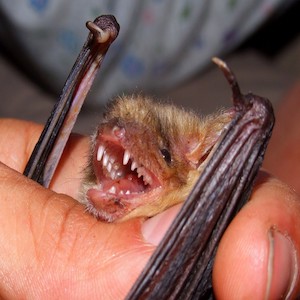Bats of Sicily: historical evidence, current knowledge, research biases and trends

SUPPORTING INFORMATION: 247
All claims expressed in this article are solely those of the authors and do not necessarily represent those of their affiliated organizations, or those of the publisher, the editors and the reviewers. Any product that may be evaluated in this article or claim that may be made by its manufacturer is not guaranteed or endorsed by the publisher.
Authors
Insular bat communities are a preeminent conservation taxon due to their ecological role and intriguing and unique species composition. Sicily is the largest island in the Mediterranean. However, research on Sicilian bats is still scattered, with substantial information being overlooked. Here we present a systematic review of all available bibliographic information from 1810 to 2022, including grey literature, archives, and peer-reviewed publications. The analyses of bibliographic sources permitted us to evaluate the status of research on bats using the Bat Research Efficiency (BRE) and Species-Research Effort Allocation (SREA) metrics. A total of 81 documents were obtained. Since 1955, an average of 1.2 contributions have been issued per year. Over half of the documents are in Italian. The studies are primarily conducted in north-western (40%) and south-eastern (28%) Sicily, mainly in the provinces of Palermo and Siracusa. Most of the contributions concern “Species records” (61%) and “Ecology” (21%). There were 28 species reported, but a significant bias exists towards Myotis myotis, Miniopterus schreibersii, Rhinolophus ferrumequinum, Myotis capaccinii, and Rhinolophus euryale. Around 31.5% of the studies focused on threatened species, while 68.5% concentrated on non-threatened species, with an overall preference for cave-dwelling species. Yet, SREA analysis demonstrates a lack of research efforts for all species. We encourage the use of a multidisciplinary approach towards under-studied species while covering geographical gaps and increasing public awareness of the functional role of bats in natural ecosystems.
Cover Image: credits Saxifraga - Rudmer Zwerver
How to Cite

This work is licensed under a Creative Commons Attribution-NonCommercial 4.0 International License.
PAGEPress has chosen to apply the Creative Commons Attribution NonCommercial 4.0 International License (CC BY-NC 4.0) to all manuscripts to be published.
Similar Articles
- Giorgio Chiozzi, Editor’s note , Natural History Sciences: Vol. 6 No. 1 (2019)
- Pierpaolo Vienna, Fabio Penati, Description of Cypturus zappii n. sp. from Sri Lanka (Coleoptera: Histeridae) , Natural History Sciences: Vol. 11 No. 2 (2024)
- Luca Anselmo, Alberto Selvaggi, First record of Scolopendra cingulata Latreille 1829 (Chilopoda: Scolopendromorpha: Scolopendridae) in NW Italy and biotope characterization , Natural History Sciences: Vol. 9 No. 2 (2022)
- Vincenzo Ferri, Paolo Crescia, Christiana Soccini, Stefano Celletti, A new possible breeding site of Alosa fallax (Lacépède 1803) (Actinopterygii: Clupeiformes: Alosidae) on the Tyrrhenian coast of Central Italy , Natural History Sciences: Vol. 11 No. 1 (2024)
- Nicolò Bagnasco, Giorgio Bardelli, Luigi Garlaschelli, The Milan “mermaid” , Natural History Sciences: Vol. 10 No. 2 (2023)
- Christopher J. Duffin, Alessandro Garassino, Giovanni Pasini, Squaloraja Riley 1833 (Holocephala: Squalorajidae) from the Lower Jurassic of Osteno Konservat-Lagerstätte (Como, NW Italy) , Natural History Sciences: Vol. 10 No. 1 (2023)
- Giovanni Pasini, Alessandro Garassino, Evidence of mysid swarm behaviour (Crustacea: Malacostraca) from the Cenomanian (Late Cretaceous) of Hakel, Lebanon , Natural History Sciences: Vol. 10 No. 1 (2023)
- Fabrizio Bartolucci, Gabriele Galasso, Lorenzo Peruzzi, Fabio Conti, Report 2021 on plant biodiversity in Italy: native and alien vascular flora , Natural History Sciences: Vol. 10 No. 1 (2023)
- Spartaco Gippoliti, Colin P. Groves (1942-2017) and his legacy , Natural History Sciences: Vol. 5 No. 2 (2018)
- Corrado Battisti, The western European hedgehog Erinaceus europaeus L. 1758 on San Pietro Island (southern Sardinia, Italy) and an updated review of its presence on the Italian small islands , Natural History Sciences: Vol. 9 No. 2 (2022)
You may also start an advanced similarity search for this article.









